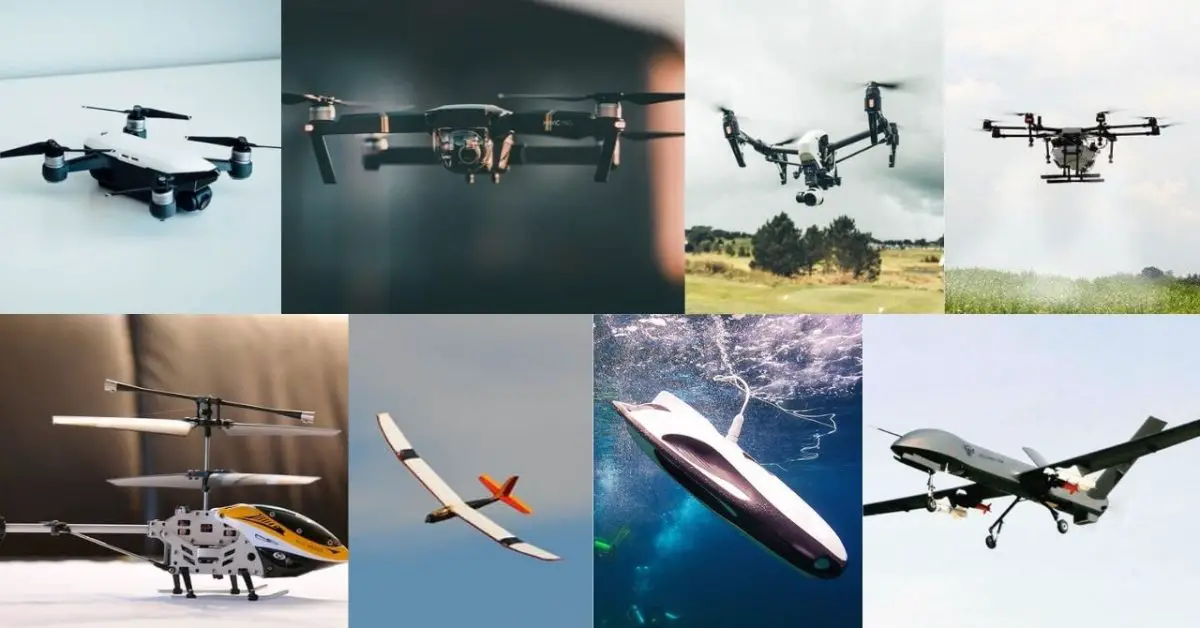Drones may be made of similar components in order to operate, but they are all different in some way whether that be with what they’re capable of doing, or what they’re made of. Most drones are made to carry out specific tasks, and are therefore built in a specific way to suit the environment they will be used in.
So, what types of drones are there?
There are many types of drones such as rotary blade drones (multi-rotor and single rotor helicopters), fixed-wing drones and fixed-wing hybrid vertical takeoff and landing (VTOL) drones. These drones have different sizes, payloads, ranges, propulsion systems and more that allow them to achieve different tasks.
Who Uses Drones?
To learn about the types of drones on the market, you first need to understand the composition of the drone core market:
- Enthusiasts
- Commercial
- Institutional
- Military
Enthusiasts
Drone enthusiasts, commonly referred to as hobbyists or recreational pilots, consist of all people who are passionate about drones and who use their drones for fun.
This market is expected to reach $2.34 billion in 2021.
If you’d like to learn all about consumer drones, we have a full post on this topic!
Related Post: What Are Consumer Drones? [Types, Uses, Sizes, Materials And Much More]
Commercial
The commercial industry includes business to consumer (B2C) businesses that use drones, including freelancers, filmmakers, real estate professionals, construction and maintenance.
According to Grand View Research:
The global commercial drone market size was valued at USD 13.44 billion in 2020. It is expected to expand at a compound annual growth rate (CAGR) of 57.5% from 2021 to 2028.
Grand View Research
Institutional
An institution can include governments, large corporations, schools and universities and any other large corporate entities that can incorporate drones into their business models.
The Airbus Zephyr can be fitted with cell phone tower equipment, and in essence, turn itself into 250 cell towers.
One Zephyr has the coverage equivalent to that of 250 cell towers
Airbus
Military
Military drones can provide intelligence, security and alternative methods to sending in soldiers to battle.
The global military drone market size is projected to reach USD 23.78 billion by 2027, exhibiting a CAGR of 12.12% during the forecast period.
Different Drone Designs
Most drones have different designs depending on the manufacturers intent. These intentions include the look of the drone and the drone’s function.
Here are all the different types of drones:
- Rotary blade
- Fixed-wing
- Fixed-wing hybrid vertical takeoff and landing (VTOL)
- Underwater remotely operated vehicles (ROV)
Rotary blade drones
Rotary blade drones consist of two categories:
- Multi-rotor
- Single rotor
These drones are mostly easy to use for beginners. They have good camera control in the air and you can operate them in confined spaces if they meet the requirements for indoor drones.
If you’d like to find out whether you can fly your drone indoors, or whether you have a drone made to be used indoors, then check out our detailed post below:
Related Post: Indoor Drone Flying: Everything You Need To Know
However, most multi-rotor drones have short flight time as their rotors each use a lot of power to keep the drone in the air.
Multi-rotor drones
Multi-rotor drones can further be broken up into more categories by counting the number of propellers the drone has.
These categories are:
- Tricopters
- Quadcopters
- Hexacopters
- Octocopters
Take note that the price of these drones on the market is determined by the quality, size and features the drone offers. When we talk about some drones costing less than others, please keep this in mind.
Tricopters
Tricopters are drones that have three propellers. These drones are considered to be more efficient than the below alternatives as they essentially have less of everything.
They have less propellers, motors, and weigh less overall and therefore don’t need as much power to generate lift. This also enables these types of drones to cost less than drones with more propellers.
Quadcopters
Quadcopters are the most common type of drone bought and sold on the market today. These drones have four propellers. The prices range from $30-$2,000.
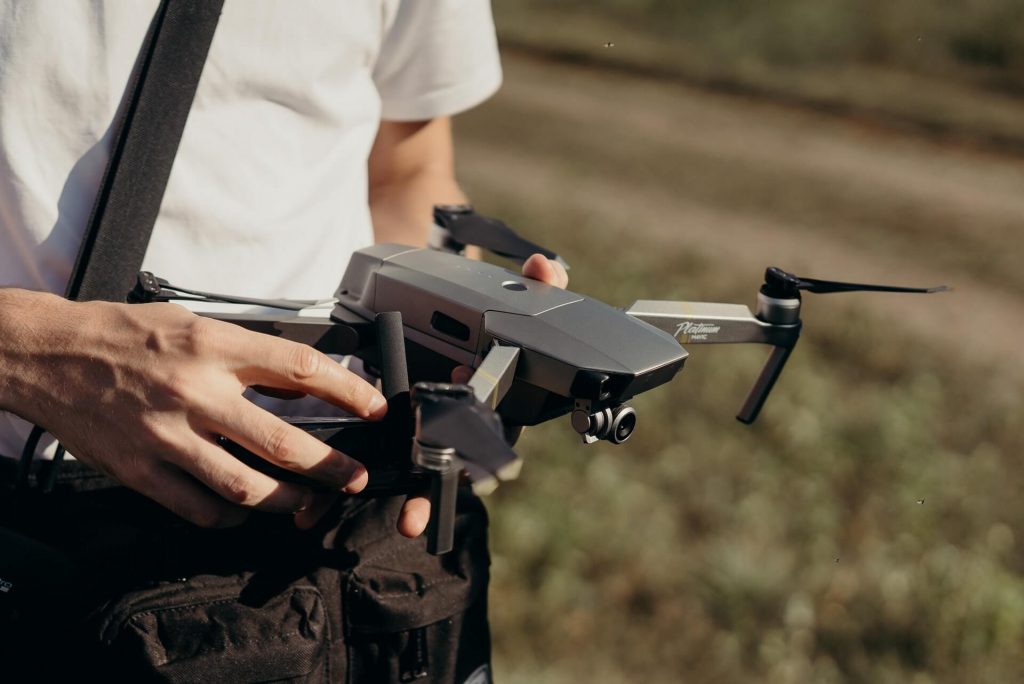
Their four propellers allow them to be stable which is why they are used by most consumers today.
Hexacopters
Hexacopters are drones with six propellers. They are very similar to octocopters so please refer to the octocopter section below for more information.
Octocopters
Octocopters are drones with eight propellers. Both hexacopters and octocopters are often made for professional applications and are therefore made of very high quality materials in order to be very durable.
These drones can be used to take professional grade photos and videos and are also being used to carry heavy payloads.
These drones can cost anywhere from $1,000 to over $16,000.
However, their are some beginner level drones of these types that can cost between $100 and $400.
Single rotor helicopter drones
Single rotor helicopter drones, often referred to as helicopter drones, single rotor drones or even remote controlled (RC) helicopters are drones that have one main propeller to generate lift.
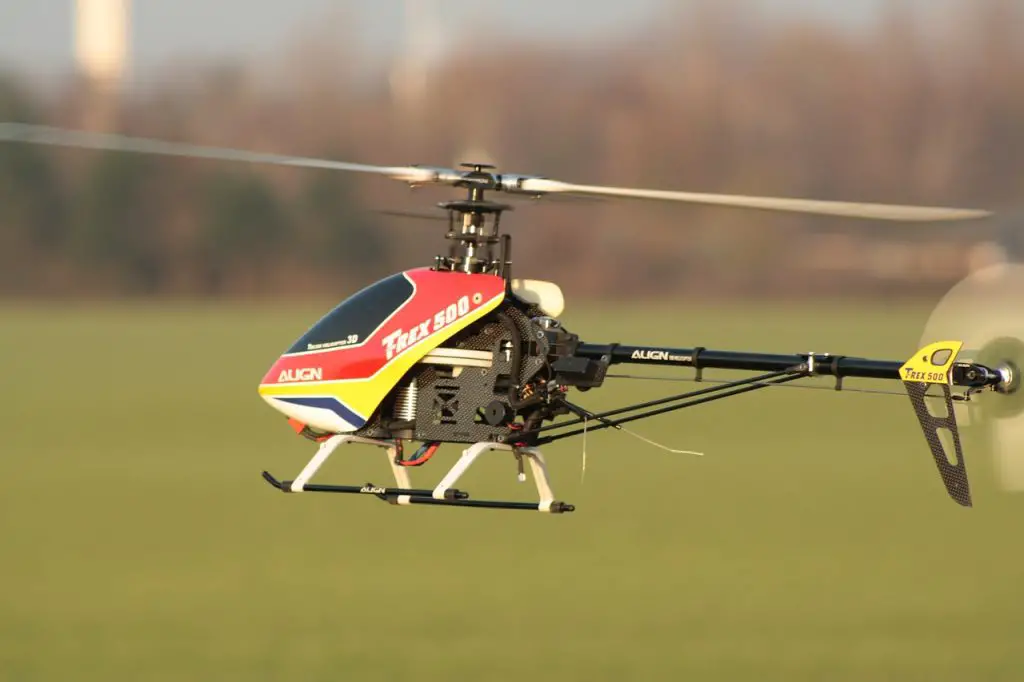
These drones of course have a small propeller at the back in order counter the torque generated by the main motor and therefore prevent the drone from spinning.
These drones are often more efficient than multi-rotor drones as they have less motors and therefore use less energy.
Fixed-wing drones
Fixed-wing drones are drones that look like planes or gliders. These drones are capable of gliding long distances in the air allowing for much longer flight times than rotary blade drones.
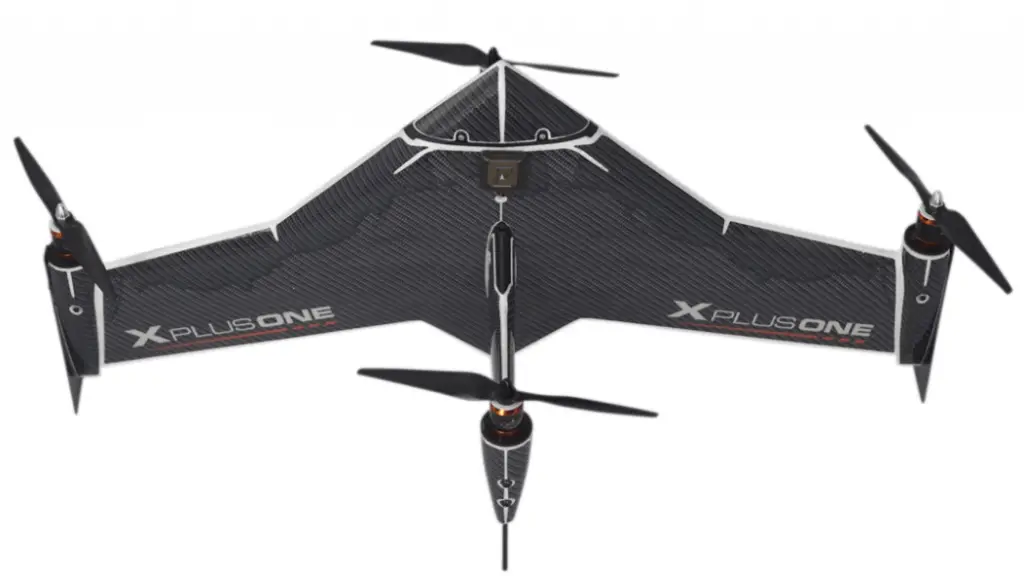
The main types of military drones are fixed-wing drones.
These drones can be challenging to learn to fly at first as they have a completely different feel compared to rotary blade drones.
They have different methods of taking off, whether that be on a small runway, physically thrown by hand or even taking off vertically which we will talk about below.
They often have very large wingspans to create lift and allow it to glide.
These drones usually cost between $50 to $300 depending on the size, weight and capabilities of the drone.
Fixed-wing hybrid vertical takeoff and landing (VTOL) drones
Fixed wing hybrid vertical takeoff and landing (VTOL) drones are capable of taking off vertically and then switching to a horizontal flight mode by tilting the propellers towards the nose of the drone.
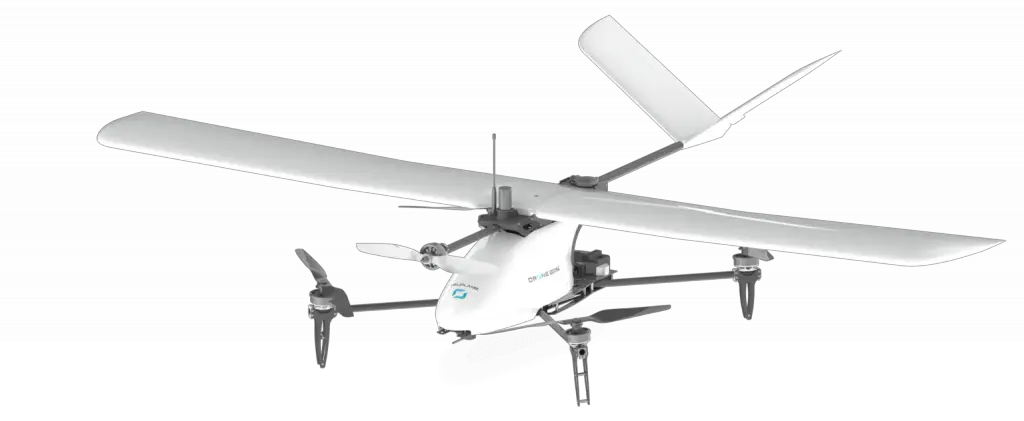
These drones are increasing in popularity due to their ability to takeoff without needing much space. These drones have the benefits of both fixed-wing drones and rotary blade drones.
This means they are capable of hovering in place and reducing energy consumption by gliding in the air.
Hybrid drones are fairly new to the consumer and commercial industries and the technology is therefore quite expensive. A high quality VTOL hybrid drone can cost you up to $20,000 although fortunately there are less expensive alternatives.
Underwater remotely operated vehicle (ROV) drones
Underwater remotely operated vehicles (ROV) are drones that are capable of diving deep into the depths of the ocean. These drones can cost you anywhere from a few hundred to thousands depending on the size, quality and capabilities of the drone.
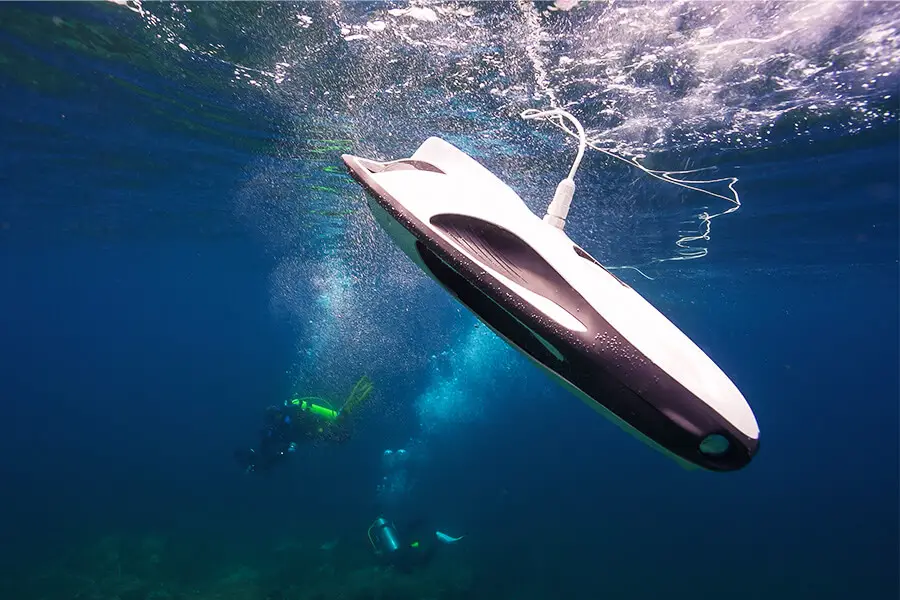
Underwater ROVs can either be tethered or wireless.
Tethered ROVs are underwater drones that have a cable that attaches to a buoy or boat to insure that the drone not get lost and to allow the drone to relay data such as video footage in real time.
Wireless drones have the same capabilities but cannot go nearly as deep in order to prevent losing connection to the drone.
If you’d like to find out how deep underwater ROVs can go, whether this be consumer drones or professional drones not available to the public, then check out our post on this topic here:
Related Post: How Deep Can Underwater Drones Go? Guide To ROV Depth Capabilities
Size Category
Drones can be classified depending on their sizes. These range from very small drones to large drones.
More often then not, you’ll find that the size of the drone may influence the quality and price of the drone. For example, very large drones may cost a tremendous amount of money whereas tiny drones may only cost you a few dollars.
These different size categories are more often found and used in different industries. Let’s dive into these drone sizes!
Different drone types by weight will be included in this category.
Very small drones
Very small drones weigh as little as 11 grams (0.011 kg)! This allows for easy transport as you can fit it in your pocket. These drones are usually smaller than your palm. They are usually called ‘Nano’ drones.
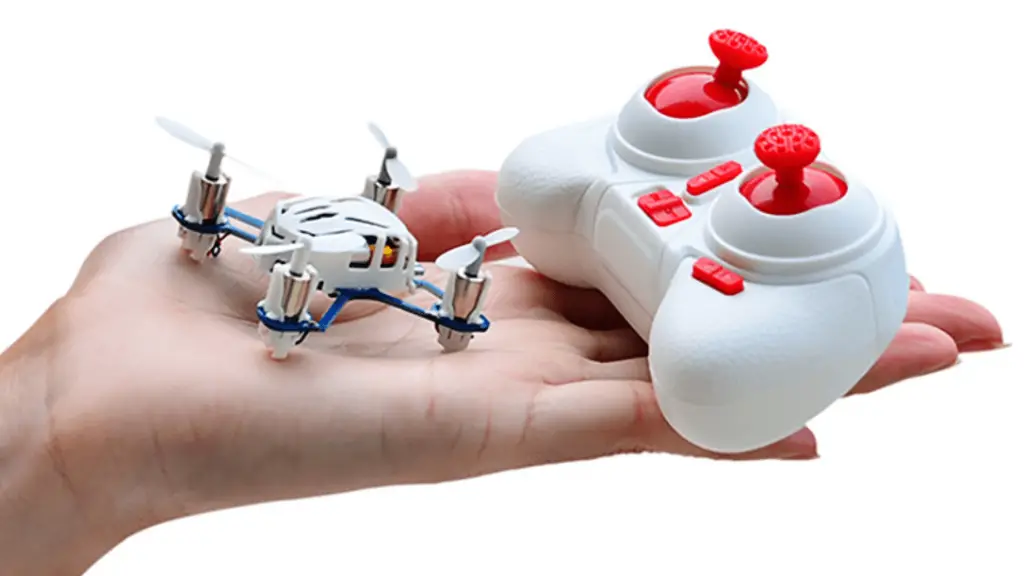
Some are as small as 1.8*1.8in (46*46mm) such as the Hubsan H111 NANO Q4 which also weighs 11.5 grams (0.0115 kg).
These types of drones are considered to be toy drones but have seen some applications in the military for reconnaissance such as the Black Hornet® 3 Personal Reconnaissance Systems (PRS) created by FLIR.Small drones
Small drones weigh between 200-1000 grams (0.2-1 kg) on average. These drones can usually still fit comfortably in your hand, especially the newer models being created such as the DJI Mini 2 which weighs less than 249 grams (0.249 kg).
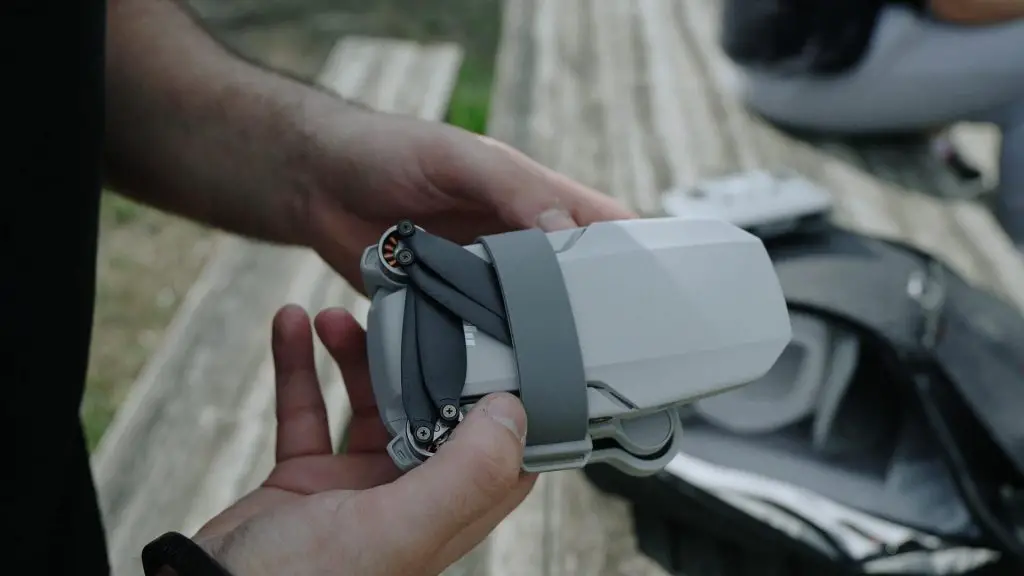
Small drones are often called ‘Mini’ drones or ‘Micro’ drones. Some are seen as toy drones but others that have higher quality and more capabilities can be used for professional applications and in the military.
Nano and Mini drones fall under the class I (<150 kg) range in the category of military drones.
Medium-size drones
Medium-size drones can weigh between 1-600 kg (2.20-1323 pounds). Some of them may require two people just to carry the drone. Medium-size consumer and commercial drones include drones such as the DJI Phantom 4 Pro and the Inspire 2 which weigh 1388 grams and 3440 grams respectively (1.39 kg and 3.44 kg).
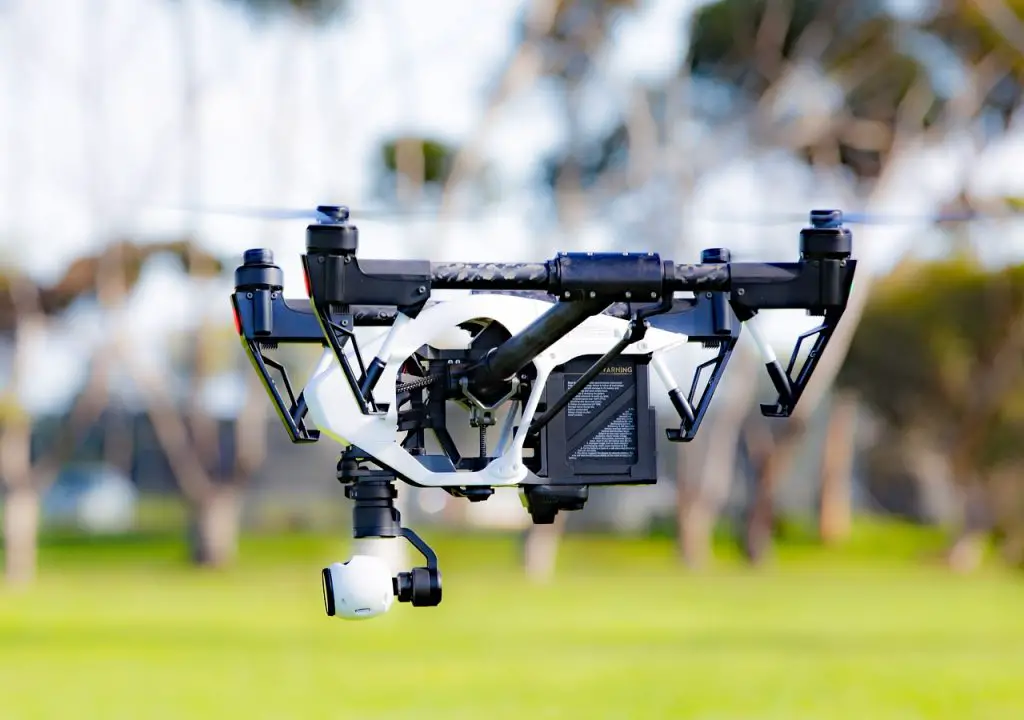
Medium-size drones fall under the class II (150-600 kg) tactical category of military drones. These military drones are used in special forces and organic battalion level for medium range surveillance.
These unmanned aerial vehicles (UAVs) come in two different categories: medium altitude long endurance (MALE) and high altitude long endurance (HALE). They are used for surveillance and strategic analysis to determine the best course of action in battle.
One example of a medium-size military drone is the Watchkeeper created by Thales in Europe which is the only UAV certified to operate in civilian airspace.
The Watchkeeper has a wingspan of 10.9m (36 feet).
Large drones
Large drones are primarily going to be found in the military. These drones are similar in size to small aircraft and are replacing fighter jets for things such as surveillance and strategy.
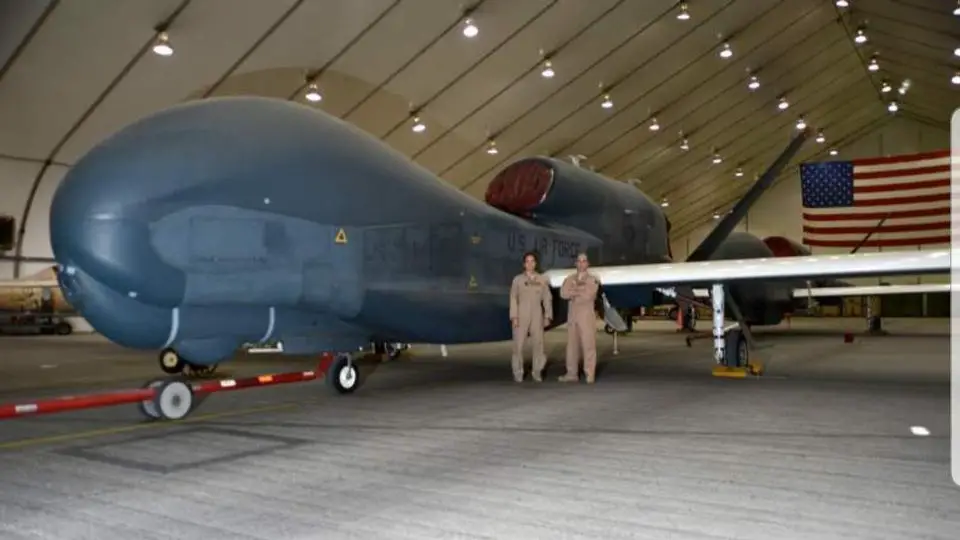
They are considered class III (>600 kg) strategic UAVs. Once again, they are referred to as MALE and HALE drones. They have state of the art technology allowing for fast enemy detection and combat capabilities.
The Northrop Grumman RQ-4 Global Hawk (as seen in image above) has a wingspan of 40m (130.9 feet) which is longer than the wingspan of a Boeing 757. It weighs 2,135kg (4,708lbs) which is about the weight of a big car.
If you’d like to learn more on the different sizes consumer, commercial and military drones can come in, whether the size of the drone matters, how to measure the size of a drone and more, we have a full post that dives into the topic here:
Related Post: Drone Sizes Explained: Consumer, Commercial And Military Drone Sizes
Payload
The amount a drone can carry will depend on the power of the motor, and the lift generated by the propellers in standard weather conditions. Performance will of course depend on the power of the motor and the overall quality of the drone.
Below we classify drone payloads in four categories.
Featherweight
This category refers to nano drones specifically. This means drones that are capable of weighing as little as 11 grams (0.011 kg). These drones have payload capacities ranging from 4 grams to 100 grams (0.004 to 0.1 kg).
An example of a military nano drone that’s capable of carrying 100 grams (0.1 kg) is the BUG nano drone developed by BAE systems in association with UAVTEK. This drone weighs 196 grams which puts it right into the very small category.
Lightweight
This category refers to mini drones specifically. This means drones that weigh between 200-1000 grams (0.2-1 kg) on average. These drones have payload capacities of between 150-270 grams (0.15-0.27 kg) on average.
An example of a consumer/commercial mini drone would be the DJI Mini 2 which is capable of carrying an incredible 283 grams (0.283 kg) which is more than its own weight of under 249 grams (0.249 kg)!
Middleweight
The middleweight category refers to medium-size drones. These are drones that weigh between 1-600 kg (2.20-1323 pounds). We can further separate them into two more categories: consumer and commercial drones, and military UAVs.
Consumer and commercial middleweight drones have payload capacities of between 400-1460 grams (0.4-1.46 kg) on average.
Military middleweight UAVs have payload capacities of between 40 kg (88 pounds) to 150 kg (331 pounds).
Heavyweight
The heavyweight category refers to large drones. These are mainly military UAVs which are essentially small unmanned aircraft. These drones weigh over 160 kg, with some weighing over 1,000 kg. These drones can have payload capacities of 550 kg and up.
The Northrop Grumman RQ-4 Global Hawk is one of the largest UAVs in the world and it has a payload capacity of 910 kg (2,006 pounds).
Drone Range
The range of a drone means the distance it can travel away from the controller before it loses signal. A special licence will be required for any other category other than very close range.
Very close range
These drones include toy and hobby drones. These range from a few hundred feet to up to 6.2 miles (10 km)! You’ll find however that most of these types of drones have a range of around 3 miles (4.8 km).
These drones have flight times of only a few minutes for toy drones and up to 45 minutes for the more expensive mini and medium-size drones.
Close range
Close range drones can travel around 30 miles (48 km) away from the controller with average flight times of up to six hours!
These drones are primarily for military uses.
Short range
Short range drones can travel up to 90 miles (145 km). These drones have average flight times of between 8 to 12 hours. These are the military UAVs that are often used for surveillance as they can also attain very high altitudes.
Mid-range
These drones are capable of travelling up to 400 miles (644 km). They can fly for over 24 hours at high altitudes of 12,000 to 30,000 feet.
These are often drones that are used for combat as well as surveillance.
Long-range
Long-range drones, often referred to as endurance drones, are drones that can achieve the unbelievable. These drones can travel much farther than 400 miles (644 km) without losing signal (some reaching hundreds of thousands of square miles).
They can fly for well over 24 hours (some reaching one whole week or 168 hours) at incredible altitudes of over 60,000 feet.
Power Sources
Battery
Batteries are the primary power source for most drones.
There are three common types of drone batteries. These are Lithium Polymer (LiPo), NiMH (Nickel Metal Hydride) and NiCd (Nickel-Cadmium) batteries.
Batteries are a great way to power a drone but sadly they decrease the overall flight times of a drone due to their sometimes heavy weight which leads to faster power consumption. However, batteries are very portable and easy to take off of a drone to recharge.
Gasoline
Gasoline is a propulsion method used in drones that are quite large in size. Gasoline is lightweight and is used in many applications today such as in cars and planes.
In many countries, gasoline is fairly cheap which allows you to use your drone for as long as you like!
Nitro fuel
Nitro fuel helps drone motors run cooler preventing overheating. The more nitromethane you add, the quicker the fuel can burn. This allows the drone’s motor to run at higher rotations per minute (rpm), which increases the speed of the drone.
Alternative powered drones
In this category, we will only be talking about solar powered drones. Solar powered drones are becoming a reality with companies such as Silent Falcon UAS which create solar powered drones.
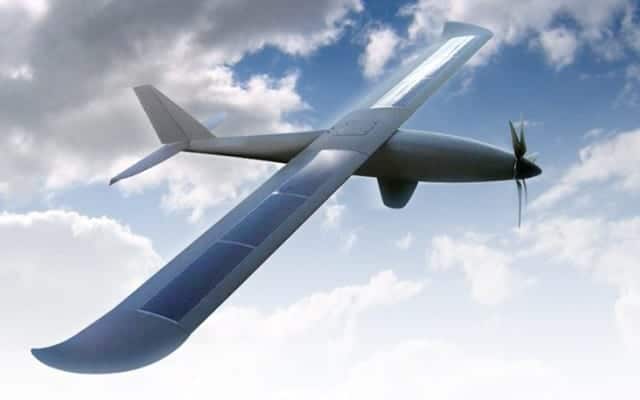
Solar powered drones use the sun as a power source by turning sunlight rays into power in order to recharge their batteries. This can allow for long flight times as long as there is sun.
Drone Use Cases
Here are a few drone use cases which you may have heard of before. The classifications correspond to general applications of drones.
Toy drones
Toy drones are just that, toys. These drones were made for beginner drone pilots and kids that are trying to dip their toes into the world of drones. They are primarily used and meant for indoor use.
Check out our post on everything you need to know about indoor drones:
Related Post: Indoor Drone Flying: Everything You Need To Know
These drones can have a range of capabilities but are primarily used in order to have fun. You can safely use these types of drones without worrying to much about breaking them as it would only have costed you a few bucks to buy in the first place.
Racing drones
Racing drones are a step up from toys. These drones have incredible technology in them allowing for incredible top speeds. They are built to be lightweight and aerodynamic.
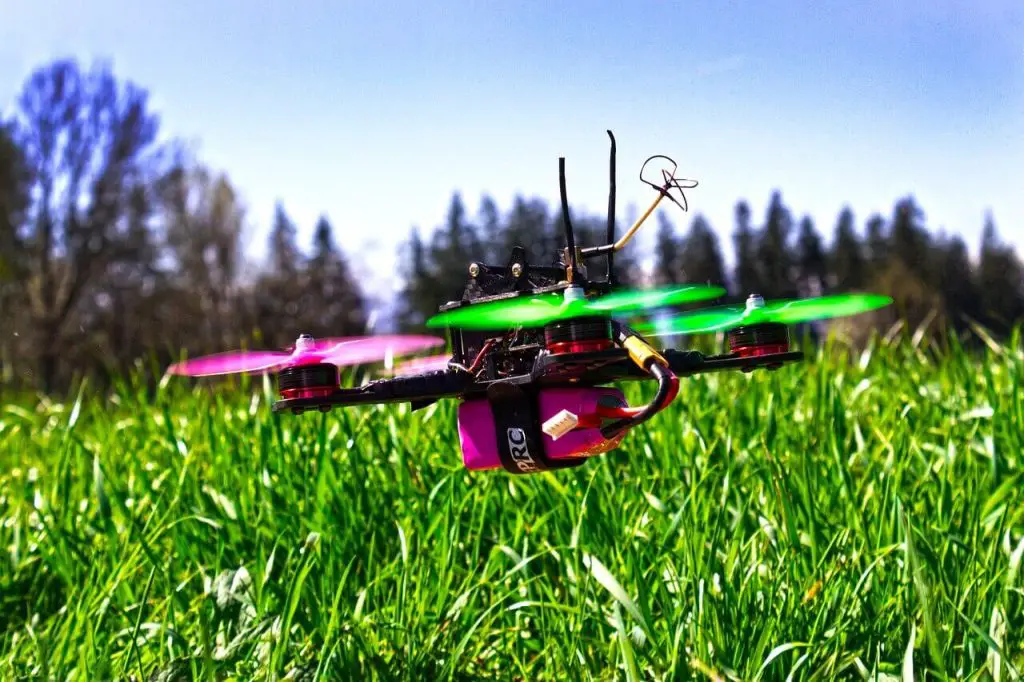
There are competitions organised by the drone racing league (DRL) where professional drone racers compete for the first place position in obstacle course races at high speeds.
If you’re interested in how fast drones can fly, check out our detailed post on this here:
Related Post: How Fast Can A Drone Fly? An In-Depth Guide To Drone Anatomy
Trick drones
Trick drones are often simply toy drones but they have cool technology in them allowing for barrel rolls and flips. These drones are small and maneuverable.
Ready-to-fly (RTF) drones
RTF drones are drones that come with all the required parts in a kit for you to assemble yourself. This allows for a fun experience as you’ll have built your own drone!
GPS drones
These types of drones are linked to satellites in order to determine their exact location. This can enable the awesome ‘Return to home’ function some drones have.
Endurance drones
We’ve already mentioned what these drones are above, but let’s refresh your memory.
Endurance drones are drones that have been optimised to stay in the air for hours, and sometimes days if we’re including military drones. These drones have big batteries and are as light as possible to reduce the battery consumption.
Fixed-wing drones are more suited to be endurance drones as they have the added benefit of being able to glide long distances and therefore reduce the amount of battery power required.
Delivery drones
Delivery drones are a new application for drones that are beginning to take flight. These drones are being tested by companies such as Amazon. These types of drones may soon become the primary way we are delivered our things in the future.
Here’s a post on several different applications for drones:
Related Post: 10 Common Uses of Drones In Our Daily Lives You May Not Know About
Photography/videography drones
Photography/videography can be just about any type of drone we mentioned in this article. These drones however are primarily used for taking high quality aerial photos and videos, so they are equipped with superior gimbals. The gimbal keeps the camera steady as the drone moves around.
If you’d like to find out what a drone gimbal is, what kinds of drone gimbals are available, whether drones need gimbals, how a drone gimbal works, how to choose the right gimbal, how much they cost and much more, check out our post on this topic below:
Related Post: What Is A Drone Gimbal? Does Your Drone Need One? [Types, How They Work, Prices And How To Choose One]
Follow-me drones
Follow-me drones are popular drones with built-in technology that makes it capable of following something or someone around without someone controlling it.
These kinds of drones with this technology are often used by runners and those doing physical activities to follow them while they’re doing another activity.
Examples Of Drones
Here are some example of both consumer and commercial drones, and military drones in tables with their designs, ranges. payloads and weights.
Consumer and commercial drones
Here are five examples of consumer and commercial drones:
| Design | Max Range | Payload | Weight | |
| DJI Agras T20 | Multi-rotor (Hexacopter) | 5 km | 20 kg | 21.1 kg |
| DJI Mini 2 | Multi-rotor (Quadcopter) | 10 km | 283 grams | <249 grams |
| Parrot Disco | Fixed-wing | 1.9 km | NA | 750 grams |
| DJI Phantom 4 Pro | Multi-rotor (Quadcopter) | 7 km | ~150 grams | 1388 grams |
| Hubsan H111 Nano Q4 | Multi-rotor (Quadcopter) | 50 meters | ~5 grams | 11.5 grams |
Military drones
Here are a few examples and types of military drones:
| Design | Flight Time | Payload Capacity | Weight | |
| Northrop Grumman RQ-4 Global Hawk | Fixed-wing | Over 32 hours | 1,400 kg | 14,628 kg |
| Thales Watchkeeper WK450 | Fixed-wing | 14-16 hours | 150 kg | 450 kg |
| Fulmar fixed-wing micro UAV | Fixed-Wing | 12 hours | 8 kg | 19 kg |
| AeroVironment Wasp III | Fixed-wing | 50 minutes | 250 grams | 1.3 kg |
Conclusion
There are many types of drones with a range of capabilities. There are also several ways people can classify drones. Drone technology is quickly improving and being created.
We may soon see an entirely new type of drone that will be not only used by the military, but also available to consumers and commercial drone operators.
We hope you understood the different types of drones and learned something new!
